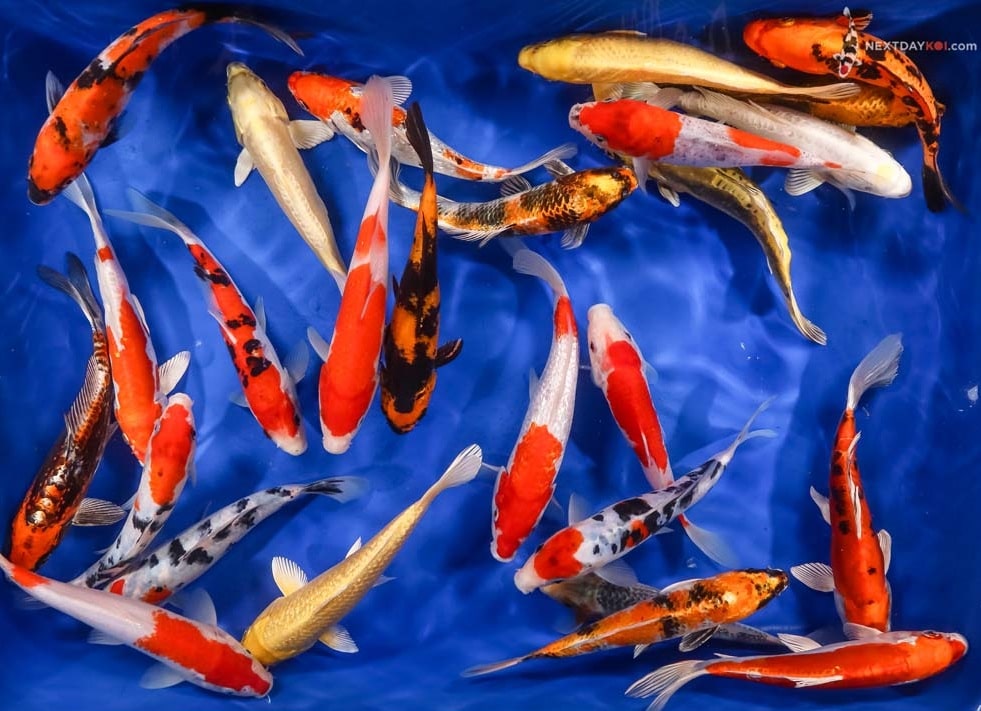10 Best Fish For Your Backyard Pond (With Pictures)
Pond Academy is reader-supported. Buying through links on our site may earn us an affiliate commission. As an Amazon Associate I earn from qualifying purchases.
Pond fish can add vibrant color and beautiful character to any pond.
And beyond aesthetics, certain outdoor pond fish can be great for ridding your pond of mosquitoes and pond weeds!
But, with all the types of pond fish out there, which one is best for you and your pond?
Let's take a look at 10 of the most popular types of pond fish and find which are right for you!
Grass Carp (Ctenopharyngodon idella)
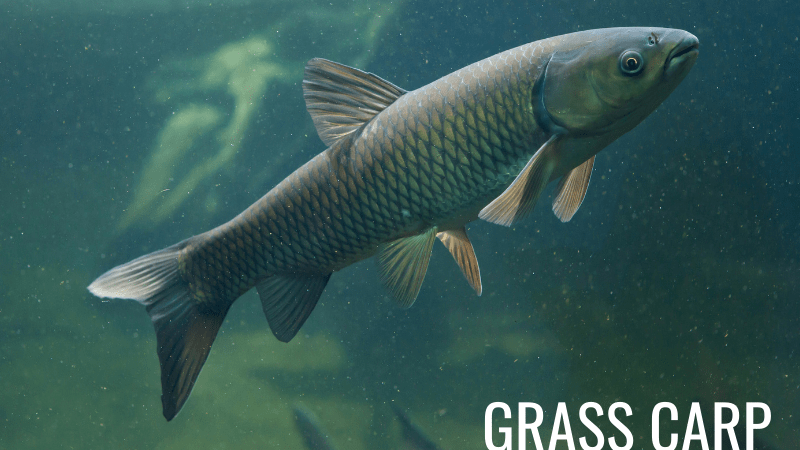
Grass carp are large, cigar-shaped herbivorous fish perfect for rooted weed and algae control! In fact, these voracious algae eaters can be so aggressive at eating pond vegetation that they can overdo it, eating all of the pond plants and potentially disrupting the ecosystem.
If you're stocking your pond with this type of carp for weed control, make sure you are indeed using grass carp and not plain carp. The easiest way to tell the difference is by the dorsal fin on the back. Plain carp have 15 rays on the fin, while grass carp have about half that.
Grass carp will generally need a large pond and are usually stocked at 5-12 fish per acre.
Life Expectancy
Grass carp can live up to 20 years, making them a good cost-effective solution for controlling weeds and microalgae in your pond.
Get Our Best Pond Tips Sent to Your Inbox for Free!
Join thousands of others and learn from our decades of pond building and maintenance experience! Your pond will thank you!
By subscribing you agree to receive emails from PondAcademy.com. We will always respect your privacy and you can unsubscribe at any time.
Fathead Minnow (Pimephales Promelas)
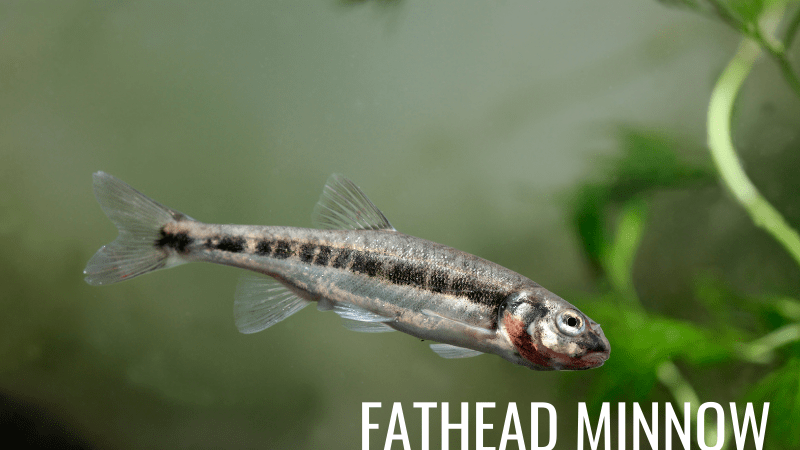
These small pond fish have small raised bodies which can be between 2 and 3 inches in length.
Pond-wise, you need at least 29 inches in depth, and you should also have a mixture of open water and planted areas in the pond. Keep in mind that Fathead minnows need to be in a school with at least 5-6 other minnows. When they are alone, they become territorial and may ram into other fish in your pond.
Fathead minnows are omnivorous, primarily eating insects and algae. You can also feed them high-quality fish food, like Kaytee's Premium Fish Food from Amazon.com, which is full of vitamins and minerals. And while they strongly prefer being kept in well-maintained water, they are fairly tolerant of harsher water conditions (they've been found in waste drainage sites).
Life Expectancy
Fathead minnows have a lifespan of approximately 2 years.
Golden Rudd (Scardinius Erythrophthalmus)
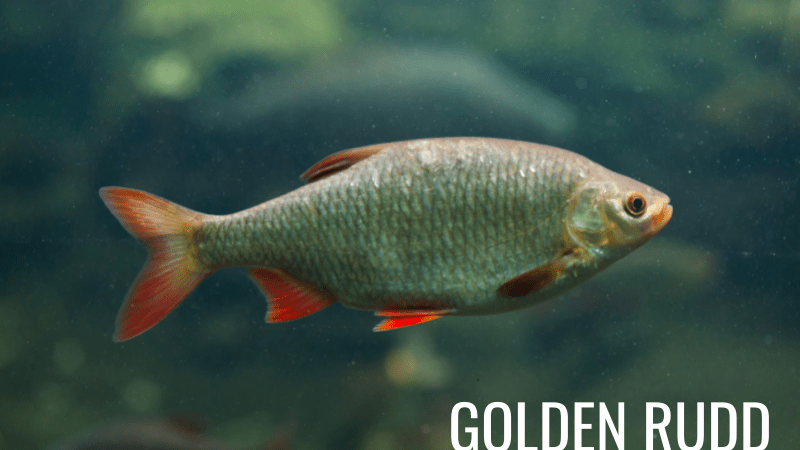
One of the nicer-looking pond fish available on the market, you may often hear Golden Rudds referred to as “Rosette pond fish”.
These fish have a unique silver and gold body, growing up to 14 inches if kept in a large enough pond.
Their scales are silver/pink on their body, while their fins have a gold-red color on their back. These are naturally healthy fish, making it unlikely that they will fall ill under your care. However, Golden Rudds can be negatively affected by mold and carp louse.
If you want to keep these unique fish in your pond, you should ensure that it is at least 28 inches deep, allowing them to easily hibernate.
Furthermore, you should have a shallow depth of around 8 inches for propagating.
These fish enjoy clean water with a bit of a flow, making a powerful pond filter necessary.
Golden Rudds enjoy being in a school of around 10-15 fish, and while they enjoy eating insects, you can buy high-quality fish food, like Kaytee's Premium Fish Food from Amazon.com, which supplies them with all the vitamins and minerals they need.
Life Expectancy
Golden rudds can live for up to 15-20 years, giving them one of the longest life expectancies of any pond fish.
Golden Tench (Tinca Tinca)
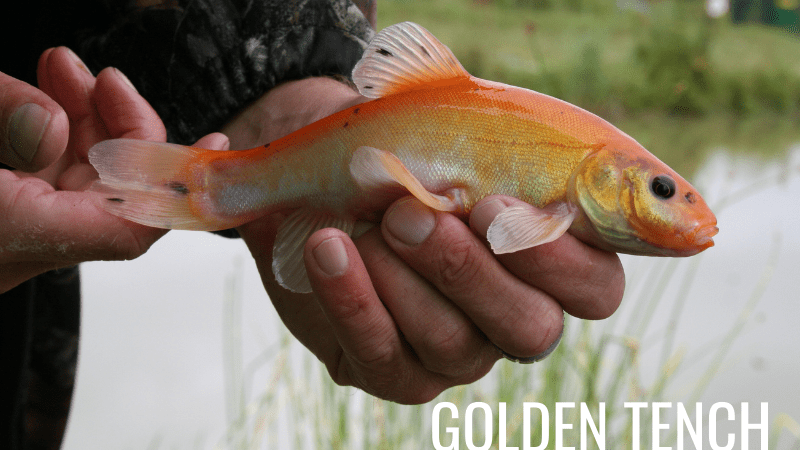
Golden tenches are beautiful golden-colored fish that are sometimes called “Doctor Fish” because they tend to prevent other fish from getting sick. This is due to their protective skin, which contains a powerful antibiotic and prevents many fish-related illnesses. This skin protects not only the Golden tench itself but also the other fish living nearby.
For even more added convenience, Golden tenches eat the excrement of koi carps, so it's a great idea to get these two fish together in the same pond – not only will the Golden tench keep everyone healthy, but they'll get rid of the mess too!
These fish can grow to an astonishing 26 inches, although they can take a long time to grow that large, and it will inevitably depend on the size of the pond they are in.
Your pond ideally needs to have a good amount of aquatic plants and a depth of around 28 inches. Golden tenches are best in a small group of around 5 or 6, although you should ensure that they are no more than 5 fish per cubic meter of water (35 cubic ft).
These pond fish eat a well-balanced mix of vitamins and minerals via a custom feed, and you should bear in mind that these fish tend to be bottom dwellers living in the muddy depths of your pond. For this reason, you may not see them very often, although they can still be very useful for your pond's overall ecosystem, even if they're seldom seen hanging out by the surface. If you want a purely visually-appealing pond fish, then you may want to pass up on a Golden tench, but if you want to help prevent illnesses in your pond and clean up koi excrement easily, these “doctor fish” could be just the thing you need.
Life Expectancy
They weigh a maximum of 10 pounds when they're fully grown and can live for up to 15-20 years.
Goldfish (Carassius Auratus)
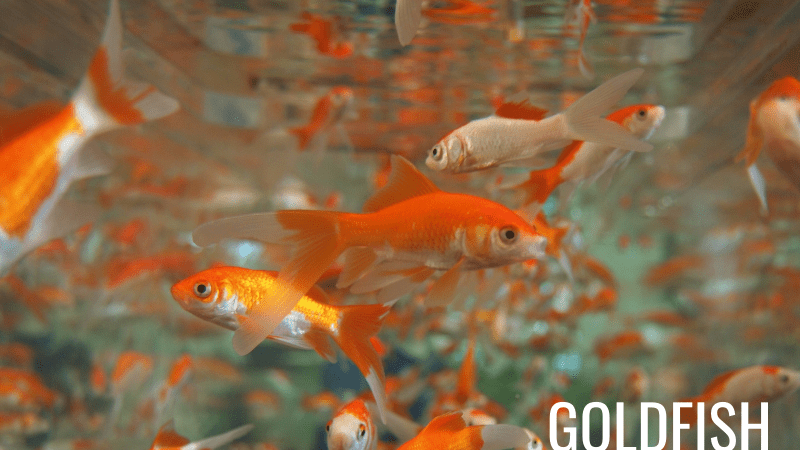
You'd be hard-pressed to find someone who's never heard of a goldfish! Goldfish are a popular addition to many homes worldwide, whether in an aquarium or garden pond.
Goldfish are a popular pond fish for many reasons – they're cheap, healthy, and visually appealing!
Goldfish grow to various sizes depending on the size of the pond they're in. Some can grow up to 14 inches in larger ponds.
There are numerous breeds of goldfish, including the Comet Tail and the Sarasa Fish.
Common goldfish primarily eat vegetable-derived foods and are renowned for their slow swimming.
Goldfish reproduce very quickly and very easily, so be sure to keep the population of your pond under control if you don't want things to get out of hand. It's recommended that you get a small group of around 5 goldfish, although you shouldn't have more than 5 per 1,000 liters (35 cubic ft) of water.
Your pond needs to be at least 40 inches deep for these beautiful pond fish, as this is ideal for hibernation purposes.
They are primarily fed with premium fish food, like Kaytee's Premium Fish Food from Amazon.com, which has been developed with them (and similar backyard pond fish species) in mind.
Bear in mind that cats and herons often hunt goldfish, so you may want to invest in some durable pond netting if you think this may be an issue. Snakes are also attracted to ponds and will eat smaller goldfish. Learn how to get rid of snakes in a pond if you run into this issue.
Life Expectancy
So, how long do goldfish live? If you keep them healthy, goldfish can live for up to 25 years!
Ide or Orfe Fish (Leuciscus Idus)
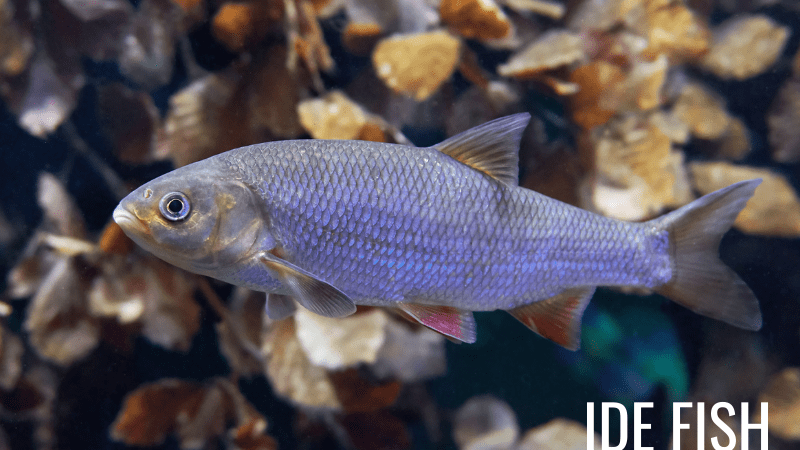
Ide fish are one of the most common pond fish out there, which is hardly surprising due to their tendency to be active on the surface of a pond. This makes them popular with people who want a visually stimulating pond.
These fish come in various species and colors, growing up to 24 inches long and weighing up to 9 pounds.
Ide fish should be kept in a school of at least 5, and your pond should be at least 40 inches deep.
Ide fish are sensitive to water quality, so much so that they are often used as “guinea pigs” for water treatment facilities – they require large amounts of oxygen in their water. Keep that in mind if you plan on stocking your pond with ide fish, as you'll need to invest in a good pond aeration system to keep the oxygen levels high.
You should also bear in mind that these surface-level fish are easily visible to garden predators such as cats and herons, which is where pond netting comes in handy.
Life Expectancy
In the right conditions, ide fish can live up to 20 years
Koi Carp (Cyprinus Rubrofuscus)
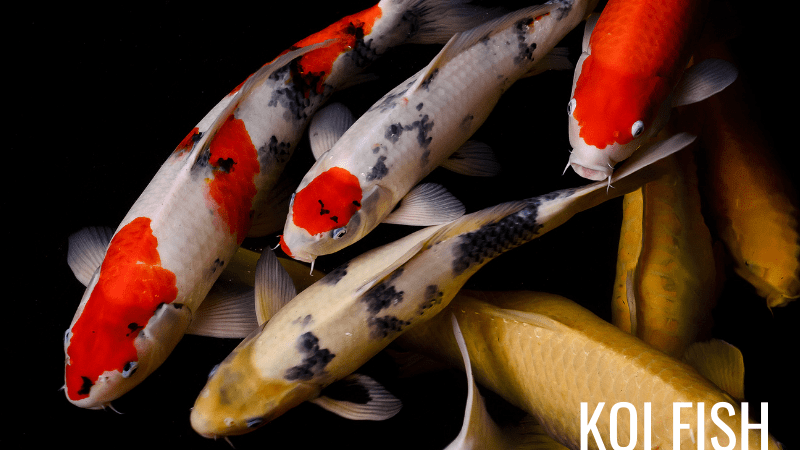
Commonly associated with ponds, these Japanese pond fish are known for their brilliant colors, old age, and large size.
![]() Did you know...
Did you know...
Koi can grow up to 32 inches, making them one of the bulkiest pond fish available.
There are over 100 types of koi fish, with some of the most popular types of koi being:
- Kohaku
- Taisho Sanke
- Showa
- Utsuri mono
- Bekko
- Asagi
- Shusui
- Koromo
Astonishingly, they can be easily trained to eat out of a human's hand, making them one of the best pond fish for those who want a little more interaction with their fish!
If you're looking to stock koi in your pond, it needs to be 24 inches deep at an absolute minimum (we prefer deeper if possible). Also, you should have 1 koi carp in your pond per 1,000 liters of pond water. Because of this, they are best suited to larger ponds.
If you have a plant-heavy pond and want to keep it that way, just keep in mind that koi will sometimes eat the plants and the roots. This can be a good or bad thing. Some like to save on food costs and gladly let their koi eat organic plants around the pond, while others take pride in their plants and don't want them harmed.
And like many of the aforementioned pond fish, Koi can easily fall prey to natural predators like herons or other animals specific to your area because of their bright, colorful bodies. I typically recommend covering your pond in netting to protect your fish from predators.
Life Expectancy
How long do koi live in a pond? Look after them well, and these amazing fish could keep your pond looking great for 20-30 years.
Pumpkinseed Fish (Lepomis Gibbosus)
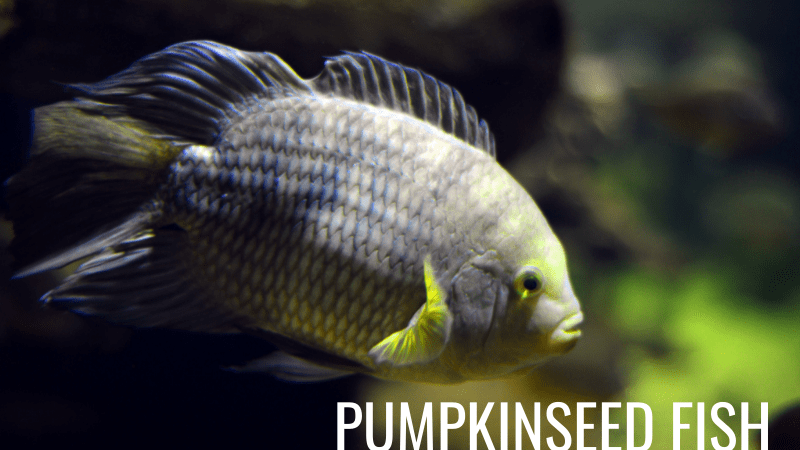
Pumpkinseed fish, also known as Sunfish, are a common North American pond fish.
These fish can grow up to 10 inches long and 6 inches tall and weigh up to a pound.
Pumpkinseed fish are strong pond fish that kill unwanted vermin like larvae and insects. However, bear in mind that you should not introduce more than one pumpkinseed fish to your pond, as they can quickly multiply.
These pond fish primarily feed on insects and parasites, helping to maintain the health of other pond fish. However, they may feed on fish eggs, which may be good or bad depending on your situation.
You should ensure that your pond has deep and shallow areas of at least 28 inches and 8 inches, respectively.
Life Expectancy
Pumpkinseed fish can live up to 12 years.
Shubunkin (Carassius Auratus)
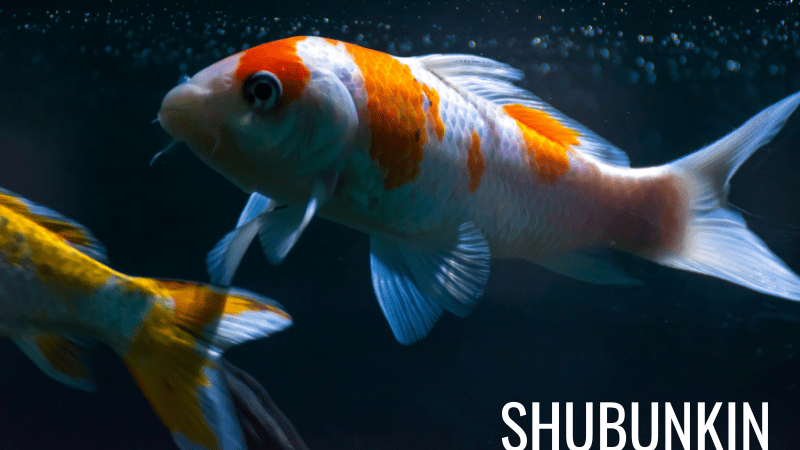
The shubunkin is an offshoot of the common goldfish, which features beautiful spotted colors of yellow, orange, red, blue, black, and white, as well as metallic scales. Its shape is similar to that of a goldfish, although it is noted for its majestic spotted fins.
If you want to keep these pond fish, you ideally need deep and shallow areas of 28 inches and 6 inches, respectively.
Shubunkin fish should ideally be in a school of around 5, and although they enjoy plants, they do need adequate swimming room.
These fish can live with multiple other pond fish species and grow up to 8 inches in length. They typically eat insects and high-quality fish feed, like Kaytee's Premium Fish Food from Amazon.com.
Life Expectancy
Shubunkin live 15-20 years on average.
Sturgeon (Acipenseridae)
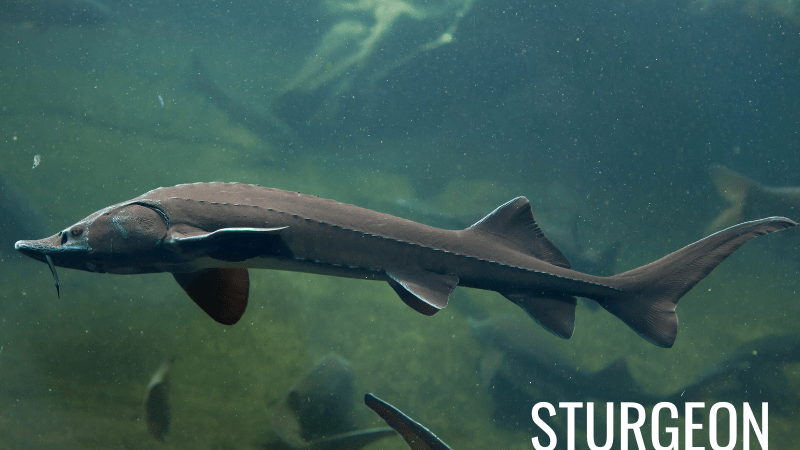
A sturgeon is a shark-esque fish that can grow up to an amazing 1100 pounds in the wild, reaching an age of up to 100 years!
These domineering pond fish are strong, yet they require a very large pond to survive. Your pond should be at least 50 inches deep everywhere, and you should have 1 sturgeon per 1,000 liters of pond water. You also need a strong filter system and a muddy bottom layer (it's typically not recommended to have a gravel pond floor with sturgeon).
Sturgeons require their own specific "sinking" feed, like these Tetra Pond Sterlet Sticks from Amazon.com, as well as high levels of oxygen achieved with a strong pond air pump. They tend to dwell near the bottom of the pond, so you should make sure that the water down there is oxygenated enough for their survival.
It is strongly recommended that you not keep these fish with plants, as it can cause them to get stuck and die. Also, bear in mind that if you have both sturgeons and koi carp in the same pond, you will need to feed them simultaneously. If not, the Koi carp will often steal the sturgeons' “sinking” food.
In freshwater ponds, you can expect these unusual fish to grow up to 50 inches or longer, so make sure that your pond is big enough to handle it!
Life Expectancy
In the right conditions, sturgeon can live 50 - 60 years.
Tips For Adding Fish To Your Pond
Adding fish to your outdoor pond should be a gradual process. Check out this quick video for tips to safely add fish to your pond and keep the pond healthy and clean.



